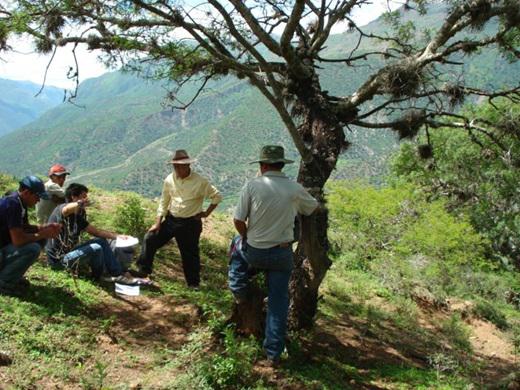Ariel Isaias Ayma Romay
Other projects
31 Aug 2011
Restoration and Management of Queñua (Polylepis racemosa) and Pino de Monte (Podocarpus glomeratus) Woodlands in the Yungas of Independencia, Bolivia I
7 Jan 2014
Restoration and Management of Queñua (Polylepis racemosa) and Pino de Monte (Podocarpus glomeratus) Woodlands in the Yungas of Independencia, Bolivia II
This project aims to reforest with native trees (Polylepis racemosa and Podocarpus glomeratus) creating social consciousness to protect the species from extinction in the area.

The Yunga forests of Independencia, Bolivia, have lost 70% of their forest cover due to fires, logging, grazing and agriculture. At the moment there are evident problems of soil erosion, water scarcity, biodiversity loss, and low wood availability for subsistence uses. Polylepis racemosa and Podocarpus glomeratus and other species are local species which are the most sought after for lumber and firewood. The populations of these species have been extremely damaged to the point that communities can no longer rely on them for lumber and firewood. If the situation continues as is, they will soon grow extinct in the region, as there is little effort to regenerate the presence of these species through reforestation. Reforestation with native trees will help counteract all before mentioned environmental problems, promote sustainable use of the forests, and restore degraded soils. We believe that the problem is not the use of these species for lumber and firewood, but in the lack of reforestation as well as rational use of the available forest. Through reforestation efforts, applying ecological criteria and techniques, we can reduce the threat of disappearance of these species locally.
I will work with communities to create six reforestation areas that are five to ten hectares in size each. These plots will be located in degraded areas where there are springs in eroded gullies, where productive use in the plots is not viable. In order to protect the reforested area, I plan on fencing off the area. Each plot will contain a minimum of 1,000 saplings of each species, totalling 12,000 saplings per plot. The large number of species and the actual plot size will contribute to ensuring greater opportunities for success by forming viable ecological communities. This strategy will also help to promote soil conservation and protect springs. We also plan on facilitating natural ecological succession by planting local grasses and native tree and shrub species that grow quickly.
The implemented lots will constitute a means that will motivate the local population, various institutions and others, to plant native trees, showing that it is both possible and advantageous. We will teach reforestation and conservation to the local communities, local institutions, and the children of the schools, preparing educational material; and we will document the results.